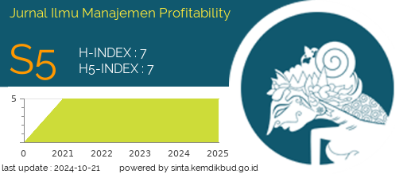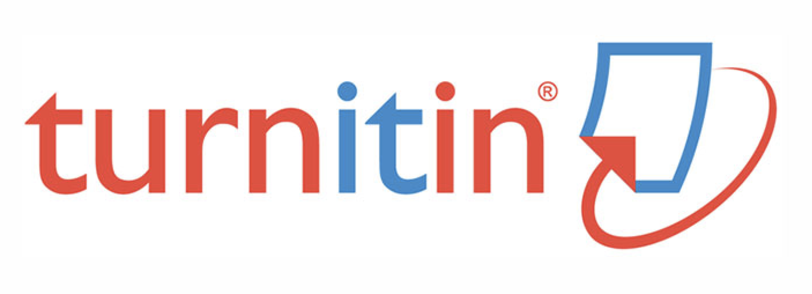PENGARUH PELATIHAN DAN KOMPENSASI TERHADAP KINERJA PEGAWAI DI KANTOR BADAN PERENCANAAN PEMBANGUNAN DAERAH (BAPPEDA) KABUPATEN BULUKUMBA
DOI: https://doi.org/10.26618/profitability.v3i1.2506
Abstract
The test results show that the training tcount, which is 2.678 is greater than t table which is 2.02269 with a significance level of 0.011. Therefore, it can be concluded that there is a significant effect of training on the performance of employees of the Regional Development Planning Agency (BAPPEDA) office in Bulukumba Regency. And the value of the compensation tcount is 2.755, which is greater than t table, which is 2.02269 with a significance level of 0.009. Therefore, it can be concluded that there is a significant effect of training on the performance of employees of the Regional Development Planning Agency (BAPPEDA) office in Bulukumba Regency. Compensation is the dominant variable influencing the performance of employees of the Bulukumba Regional Development Planning Agency (BAPPEDA) office with a Beta (Standardized Coefficient) value of 0.440.
References
A.A.AnwarPrabu Mangkunegara. 2011.Manajemen Sumber Daya Manusia. Perusahaan.PT.Remaja Rosda Karya, Bandung.
Ardana. 2012. Manajemen Sumber Daya Manusia. Jogjakarta : Graha Ilmu.
Dessler, Gary.2013. Human Resource Manajemen (13 thed). Edinburgh Gate : Pearson Education Limited.
Hasibuan, Malayu. 2012. “Manajemen Sumber Daya manusia”. PT Bumi. Aksara. Jakarta.
Hasibuan, Malayu. S. P. 2014. Manajemen Sumber Daya Manusia. Jakarta : PT. Bumi Aksara.
Peraturan Pemerintah Republik Indonesia Nomor 46 Tahun 2011 Tentang Penilaian Kinerja Pegawai Negeri Sipil. (http://www.batan.go.id/prod_hukum/extern/PP-46-TAHUN-2011, Diakses tanggal 29 Desember 2017)
Priyatno, Duwi. 2012. Cara Kilat Belajar Analisis Data dengan SPSS 20. Edisi Kesatu. ANDI. Yogyakarta
Downloads
Published
Issue
Section
License
Authors who publish with Jurnal Ilmu Manajemen Profitability agree to the following terms:
Copyright of the articles remains with the authors.
Authors grant the journal the right of first publication with the work simultaneously licensed under a Creative Commons Attribution-NonCommercial 4.0 International License (CC BY-NC 4.0). This license allows others to:
Share (copy and redistribute the material in any medium or format)
Adapt (remix, transform, and build upon the material)
as long as they give appropriate credit to the original author(s) and source, provide a link to the license, and indicate if changes were made. Non-commercial use only.
Authors are permitted to:
Distribute their published work (e.g., post it to an institutional repository or publish it in a book), with an acknowledgment of its initial publication in this journal.
Enter into separate, additional contractual arrangements for the non-exclusive distribution of the journal’s published version of the work (e.g., post it to a class website or institutional archive).
For permissions to use the content published in this journal beyond the scope of the license (e.g., commercial purposes), please contact the editorial office via the journal email.
License Details:
This journal is licensed under a Creative Commons Attribution-NonCommercial 4.0 International License (CC BY-NC 4.0).












